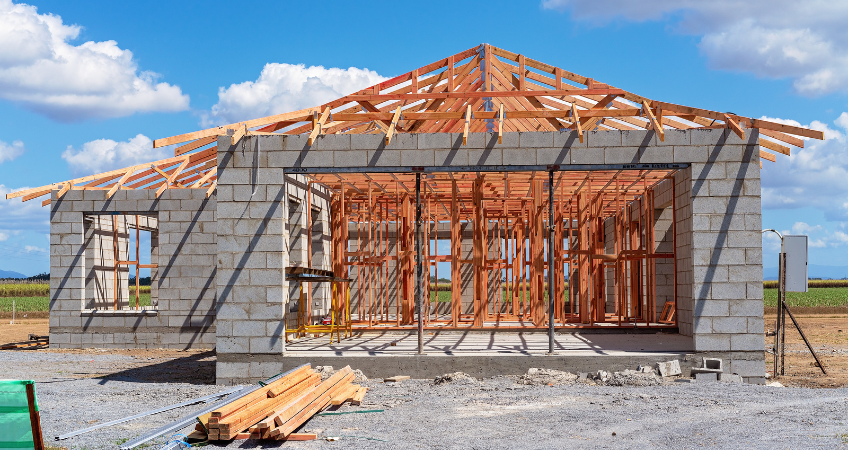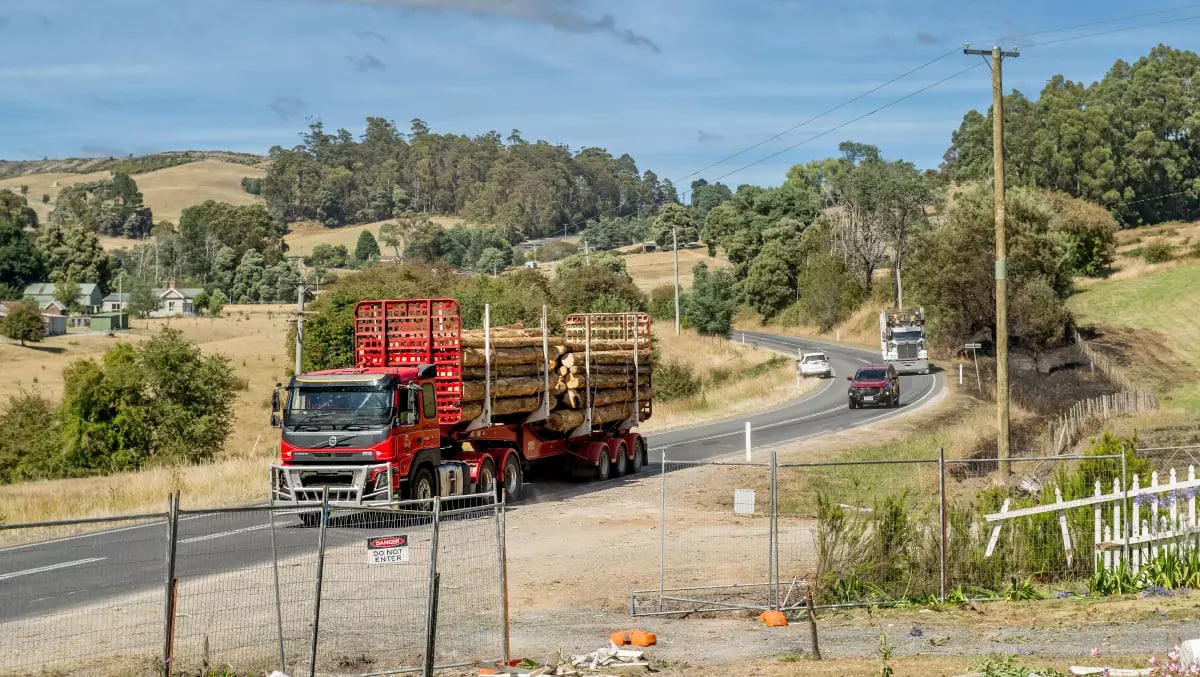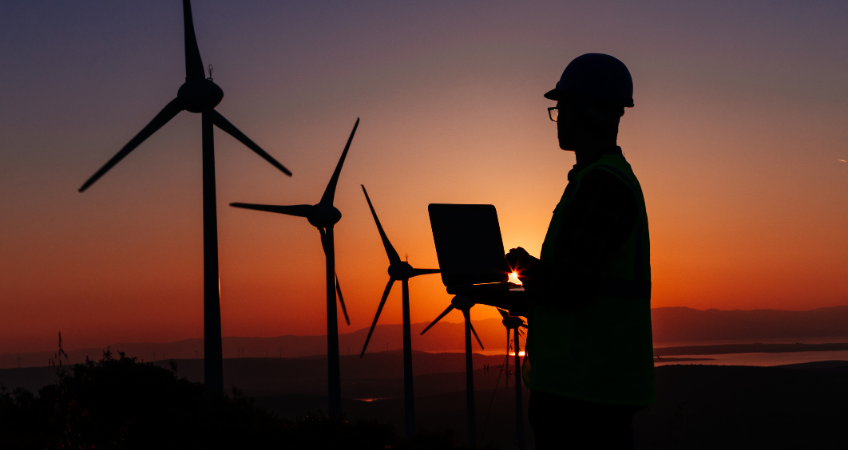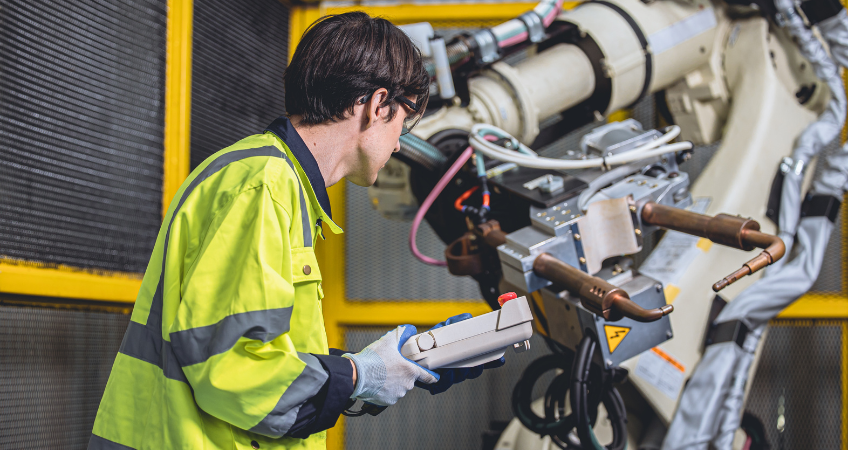In 2024, the Australian construction industry faces a wave of transformation, reshaping the landscape. We’ll feel the ripple effects of government policy changes on infrastructure projects, affecting the industry on all fronts. However, as residential construction evolves, the industry has many opportunities for the smart operator.
This year, the focus areas are sustainability, advanced technologies in construction and renewable energy. We'll look at four main trends: government infrastructure, residential construction, opportunities in tech and rare earth metal and renewable energy investments.
Each trend brings challenges and opportunities, and this guide offers strategies for construction businesses, contractors and tradies to help you get your business out there and get a slice of the pie. Time to adapt, innovate and lead in 2024.
.png?width=835&height=443&name=Tasmania%20Transport%20Infrastructure%20(3).png)
Future Residential High-Rise Project (Photo Credit: dimaberlinphotos)
1. Government Infrastructure Project Cuts: Understanding the Impact
In 2024, the construction industry faces massive changes, particularly with government infrastructure projects. The Australian government is shifting its approach to infrastructure investment following an independent review. This commissioned review in April led to the axing of one in 10 major infrastructure projects across the country, including 82 unrealised projects.
Why the Cuts?
To put it bluntly, the government is redirecting funds to more promising projects. This move is their response to over-spending in the sector, with $33 billion in blowouts, $14.2 billion of which went to projects dead in the water.
The economic impact of these projects is something you can’t ignore. The International Monetary Fund urged a reassessment of the infrastructure pipeline to reduce pressure from inflation. Meanwhile, experts believe the true cost of projects is higher than budgeted. This means more stringent financial management in the sector.
How Will This Affect the Construction Market?
Cuts aside, there’s no certainty about the many projects that have the funding. These projects have also received more funding:
- Logan-Gold Coast Rail infrastructure in Queensland
- Upgrades to the Western Highway corridor in Victoria
- Perth’s Metronet Rail project

Logan-Gold Coast Rail Infrastructure (Photo Credit: ANZIP)
A few projects are still being funded, including the following:
- Melbourne Airport rail link ($8 billion to $13 billion)
- Milton-Ulladulla bypass on NSW's South Coast ($1 billion)
- Hunter Valley Singleton bypass ($700 million)
The government also plans to increase funding to local councils under the Roads-to-Recovery Program and expand the Black Spot Program. These changes should improve gov’t project planning and cost management, along with a recommended 50:50 funding split between the feds and states.
What Can You Do?
Start by focusing on projects that are on the government's radar. Check out the list of cancelled projects on The Guardian to see if any local projects have been impacted. However, large projects often require tendering. We have a downloadable e-book to help improve your tendering approach and get your foot in the door in these projects.

Residential House Construction (Photo Credit: Getty Images)
2. Navigating the Slowdown in Residential Construction
The Australian residential construction industry faces a challenging landscape in 2024. The industry saw a robust increase in construction work in the first half of 2023. However, per industry data, many expect a 2.5% decline in 2024.
This downturn is an effect of inflation, high interest rates, escalating construction costs, falling building permits, labour shortages and a general slump in the residential construction sector. Notably, the Australian Securities and Investments Commission (ASIC) reported a 36% year-on-year increase in building companies closing in the first nine months of 2023. This includes home-builder powerhouse Porter Davis Homes closing shop.
Any Good News?
Despite these challenges, the industry is predicted to record an average annual growth of 3% from 2025 to 2027. This optimism comes from the government's focus on developing transport, housing, renewable energy, health, education and manufacturing infrastructure.
In another massive move, the federal government has approved the construction of 1.2 million new homes over five years, starting in 2024. States and territories will receive up to $4.7 billion for this project. Additionally, state governments have announced investments in these major transport projects:
- The Victorian government's $6.6 billion funding for road network works over the next decade
- Tasmania's $2.2 billion investment in transport infrastructure over the next four years

Tasmania Transport Infrastructure (Photo Credit: The Examiner)
As we say, 'Where roads and trains go, houses follow' – this is true for Australia's residential construction sector. Investment in transport infrastructure is a driving force in developing new residential areas and connecting communities together.
Better connectivity through road and rail networks means easier and faster commutes. Easier, faster commutes mean increasing the attractiveness and value of nearby properties. Therefore, government investment in transport infrastructure can also be a pivotal step towards revitalising the housing market and stimulating residential construction growth.
What Can You Do?
Despite the residential sector slowdown, leveraging the upcoming growth in other construction areas or your areas of expertise is vital to your company’s growth in this year’s challenging landscape. Service providers across several marketplaces, such as arborists, concrete pump hire and landscapers, are leaping from small residential jobs to commercial projects.
Start by winning the local projects first. One solid thing you can do right now is to give your Google Business Profile a quick boost. Update your info, provide clear service listings and ask customers to leave reviews to improve your local SEO. Our team at iseekplant can help, offering tools to enhance your online presence and connect with more clients in your area.
Get machine rates online
3. Riding the Wave of Renewable Energy Investments and Rare Earth Minerals
Australia's construction industry is gearing up for renewable energy projects in 2024, especially solar power projects. Sustainability goals and evolving markets drive this change, opening new doors for construction businesses in this industry.

Renewable Energy Systems Engineering (Photo Credit: Getty Images)
New Renewable Energy Projects
Key projects headlining this trend include Queensland's Genex Kidston Pumped Hydro Energy Storage Project, which combines hydro, wind and solar energy. Speaking of solar, you’ll find many solar farms in the works up and down the country.
Notable among these is French renewal energy giant Neoen's recent construction start on its second-biggest solar farm in New South Wales. CIMIC’s Pacific Partnerships has also energised its first solar farm, marking a significant leap in sustainable energy production. Additionally, ACCIONA is gearing up to commence work on a massive 380 MW solar farm, pushing the country's commitment closer to expanding solar energy.
Rare Earth Minerals
In 2024, the mining industry is also pivoting towards rare earth metals. These efforts could reshape traditional mining operations and opportunities for innovation. One notable example is the Yangibana Project in Western Australia, a rare earths venture by Hastings Technology Metals. This $658 million project, focused on producing a Mixed Rare Earth Carbonate, is crucial for manufacturing permanent magnets essential in Electric Vehicles (EVs), wind turbines and various electrical consumer products.
On all things electric, the mining sector in Western Australia is shifting gears towards lithium. The surging demand for batteries from power tools and E-scooters to electric vehicles has driven this shift. Key lithium mines have either commenced or ramped up production to meet this growing need. This development is reshaping traditional mining operations, offering fresh opportunities for innovation and expansion in the construction sector.
These developments show how critical Australia's construction industry is in building and maintaining the mining and energy sites, helping bring the country closer to the future.
.png?width=848&height=450&name=Tasmania%20Transport%20Infrastructure%20(1).png)
Coal Mining Truck on Haul Road (Photo Credit: Getty Images)
Increased Demand for Skilled Construction
The expansion of this sector is reshaping the construction landscape, requiring new skills and innovative materials to meet its evolving demands. Investment in renewable infrastructure is set for a 49% increase to $5.2 billion in 2024.
According to industry data, the solar sector could peak at $3.6 billion and wind energy construction at $5.4 billion by 2026. Such growth is fuelled by the Australian government's commitments to reducing emissions and replacing coal-fired power stations with renewable energy sources.
Capitalising on Renewable Trends
For construction businesses, this is a call to diversify and upgrade skills to align with the new requirements of renewable energy projects. The rapid growth in investment shows the need for a skilled workforce adept in building and maintaining these new-generation facilities.
The growth of renewable energy is an excellent chance for the construction industry, but it does come with challenges, like needing new skills and technologies. If construction businesses can adapt to these changes and use them to their advantage, they'll make the most of this shift towards renewable energy investments.
What Can You Do?
One thing's for sure: the renewable energy boom is creating diverse opportunities in construction, extending well beyond the electrical trades. These projects need construction support, including work camp facilities, access road upgrades, stormwater drainage systems and concrete structures. For instance, constructing a solar farm can involve installing over 1,000 small augered piers in precise alignment for solar panel footings. This task is no easy feat, requiring a substantial workforce and plant hire suppliers.
Success Stories in Renewable Energy: Powered by iseekplant
In the renewable energy surge, our team at iseekplant has proven our worth as a pivotal connector for construction businesses getting into these dynamic projects. Joining our platform means your business gains exposure to many opportunities, from solar and wind farm construction to mining and drilling tasks.
Solar Farm in Queensland (Photo Credit: Getty Images)
Transforming Sectors: iseekplant's Role in Solar and Mining
Take Solar Farm Civils, for instance, a company that's carved its niche in the solar sector. They’ve leveraged iseekplant to broaden its project scope and industry connections and haven’t looked back. Orana Drilling is another success story, excelling in solar farm drilling with the support of our extensive network.
In mining, firms like Marlee Resources have significantly impacted Western Australia, utilising iseekplant to extend their reach in mining and civil contracting. Hicks Civil and Mining, operating in rural WA, have also found success through our platform, tapping into new mining opportunities. Pipeline Plant Hire, known for its expertise across various industries, from water to renewable energy, has effectively used iseekplant to fulfil diverse project needs and expand its client base.
Energising Wind Farm Projects with iseekplant
The wind energy sector, another vital part of Australia's renewable energy landscape, has also seen remarkable contributions from iseekplant partners. Meales, a company specialising in wind farm projects, has utilised iseekplant effectively to engage in significant wind energy initiatives across the country. Their success on our platform has been a testament to their expertise and adaptability in this growing sector.
Similarly, Roskeen Civil Earthmoving, with their years of experience in renewable projects, including wind farms, has leveraged iseekplant to showcase their capabilities and connect with new opportunities in this niche market. QLD Civil Solutions, experts in drilling for wind farms and handling transmission projects, have also found iseekplant instrumental in increasing their visibility and securing key projects.
For these companies, iseekplant has not just been a platform for advertising; it's been a strategic tool for adapting to industry shifts, hunting for big tenders, and boosting their exposure online through increased SEO and adwords spend. This approach has enabled these companies to position themselves as key players in the growing renewable energy sector.
4. Tech Breaking Ground in the Australian Construction Industry
In 2024, the Australian construction industry is embracing a digital transformation. While traditionally slower in digital adoption, we now see an exciting shift. The Australian Government's 2022-23 Federal Budget, with its $1.3 billion investment in communications infrastructure, clearly indicates this commitment to digital progress.
Another key technological advancement reshaping the Australian construction industry is machinery automation and guidance systems. These innovations are transforming how construction projects are executed, offering significant improvements in efficiency, accuracy and safety.

Lead Engineer working in advanced technology automation (Photo Credit: Quality Stock Arts)
Machinery Automation Tools
One of the standout tools in this category is automated bulldozers. Equipped with GPS and advanced control systems, these bulldozers can perform tasks like grading and levelling with minimal human input, ensuring precision and reducing labour costs. Another example is drone technology for site surveying. Drones equipped with cameras and sensors can quickly map a construction site, providing critical data for planning and monitoring progress.
Guidance Systems
Guidance systems are another area where technology is making big strides. Systems like 3D machine control are now used in excavators and graders. These systems provide real-time data to operators, allowing for precise digging and grading according to pre-programmed site specifications. This technology not only speeds up the construction process but also reduces errors and rework.
Material Handling Automation
Automated material handling is also gaining traction. Robotic arms and automated guided vehicles (AGVs) are critical in transporting materials across a construction site or for repetitive tasks like laying bricks or pouring concrete. These tools improve efficiency and reduce the physical strain on workers.
Safety and Efficiency
Alongside productivity, safety is a significant benefit of these technologies. Automated machinery has safety features like collision avoidance and automated emergency response, which help reduce on-site accidents.
Potential Challenges to These Advancements
Australia's construction industry faces challenges adapting to change as it breaks new ground. Upskilling the workforce, adopting new construction methods and integrating these technologies into existing workflows will be key to capitalising on these emerging opportunities. This transformation marks a pivotal moment in the industry, aligning it with global trends towards sustainability and innovation in construction.
What Can You Do?
You don’t have to go all out and get all these systems immediately. You can begin with what makes more sense or what applies to your business. For example, suppose your business offers site clearing. You can invest in a consumer-grade drone to get a clearer picture of the job. If getting these systems is not in your plans, get yourself certified to operate these systems to open yourself to more opportunities.
Staying abreast of these innovations and gradually integrating them into your processes will enhance your company’s efficiency and competitiveness. Consider attending workshops or online courses on emerging construction technologies to stay ahead of the pack.
Conclusion: Embracing Change in the Construction Industry
We can define Australia's construction industry in 2024 by one word: adaptability. The key message is that suppliers and business owners who adapt their business to current trends are likely to experience growth in 2024.
Businesses must pivot towards government-sponsored projects and explore emerging sectors in the infrastructure landscape to achieve growth. Surviving the residential construction slowdown means diversifying into more predictable civil and commercial sectors. Embracing tech and rare earth metals requires upskilling and innovation. Capitalising on the renewable energy boom means upgrading skills to meet new demands.
The key to thriving amid these changes is being proactive and adaptable. Construction businesses that keep themselves informed and ready can seize new opportunities in this changing environment. For support and deeper insights, the iseekplant Constructionsh*t Blog offers valuable resources to navigate these industry changes.



.png?width=848&height=450&name=Tasmania%20Transport%20Infrastructure%20(2).png)